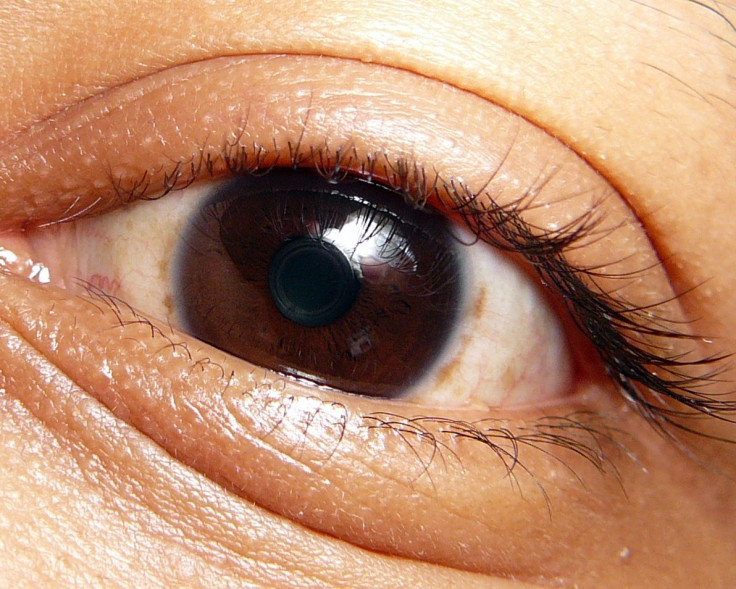A Droopy Eyelid Isn't Just A Matter Of Age; Now Gender, Race, And More Also Thrown Into Mix

Sagging eyelids have been known to accompany the myriad of changes the body goes through as it ages. Researchers from Erasmus Medical Center in the Netherlands sought to pinpoint the risk factors for sagging eyelids, aside from the natural aging process.
The study, which was published in JAMA Dermatology, included two different groups in order to evaluate the extent to which droopy eyes are of a genetic cause. Of the first group of 5,578 unrelated participants with North European ancestry, 17.8 percent had moderate to severe sagging eyelids. When researchers looked at the 2,186 twin participants, they found that within the pairs, 61 percent had inherited their sagging eyelids.
“The most common cause for sagging eyelids is genetics. By looking at your parents you will have a good indicator on whether or not you’ll develop large fat pads,” said, Dr. Cameron Rokhsar, fellowship-trained dermatologist and cosmetic surgeon and professor of dermatology at Albert Einstein College of Medicine.
Periorbital puffiness, or swelling of the tissues around the eyes, is a common occurrence that may happen regardless of age or gender and can be caused by a high-salt diet, oversleeping, or alcohol use. However, the protrusion of intraorbital fat, which is the swelling of lower eyelid fat, has been generally accepted as a part of the aging process.
In addition to genetics, the study also found that age, being a male, having lighter skin color, and a higher body mass index (BMI) were all risk factors for sagging under-eye skin. A person with a higher BMI, typically has more fat accumulated than does a normal-weight person, which means their under-eye fat pads have a greater chance of being larger and protruding from the skin more.
Some call this protrusion blepharochalasis, also commonly known as under-eye bag or baggy eyelid. It is a very common condition accompanied with normal aging, fatigue or being tired, allergies, swelling, obesity, and certain medical conditions.
The eyes require special treatment and care because of the delicate texture of the skin. It can be easily stretched and fat pads can weigh the skin down and accentuate droopy-eyed bags. It’s known that age and other factors can let the muscles wear out and sag, and cause fat to bulge. Wrinkles, bags, dark circles, and hooded eyelids are not only not flattering, but they can also cause vision obstruction and headaches from straining to keep the eyes open.
Fortunately, there are a variety of nonsurgical and surgical treatments for patients with saggy eyelid skin. It just depends on the type of droopiness that occurs. Aging upper eyelids often develop loose saggy skin. Lower eyelids can become puffy and crepe-like. In addition, dark circles can develop around the eyes.
Injectable fillers are one of the easier and effective ways to smooth the skin around the eyes and provide subtle, natural looking volume to correct hollow eyes. However, this will not help those with protruding fat pads. Belotero is a specially designed gel used to diminish both fine lines around the eyes and even the upper lip by providing volume while simultaneously hydrating the skin.
Laser surgery is a non-invasive way to tighten the skin around the eyes. The fractional CO2 laser can be used to gently resurface eyelids gradually and can be used in addition to filler or surgical treatments. The laser causes microscopic thermal damage and the skin responds by rapidly healing and peeling old damaged cells, which creates newer tighter skin underneath the eyes. The C02 laser can also improve the skin’s elasticity, texture, fine lines and deep wrinkles, acne scars, and sunspots.
When non-surgical treatments do not provide the patient with the results they desire, blepharoplasty, or eyelid surgery, is an effective route to achieve cosmetic goals. The procedure is performed by making tiny incisions in the eyelid and under the eye. Any excess fat is removed, the skin is then tightened and sutures are secured. Removal of the under-eye fat pad will significantly decrease any puffiness around the eye. Eyelid surgery can correct droopy upper eyelids, also known as hooded eyes, but does not remove dark circles or lift sagging eyebrows, each of which can be treated separately.
“Blepharoplasty is actually the only way to remove protruding fat pads, especially for those who are overweight and have an increase of fat,” Rokhsar said. “But for tightening skin and filling in hollow under eyes, there are a variety of nonsurgical treatments available.”
Source: Jacobs, L et al. JAMA Dermatology. 2014.



























